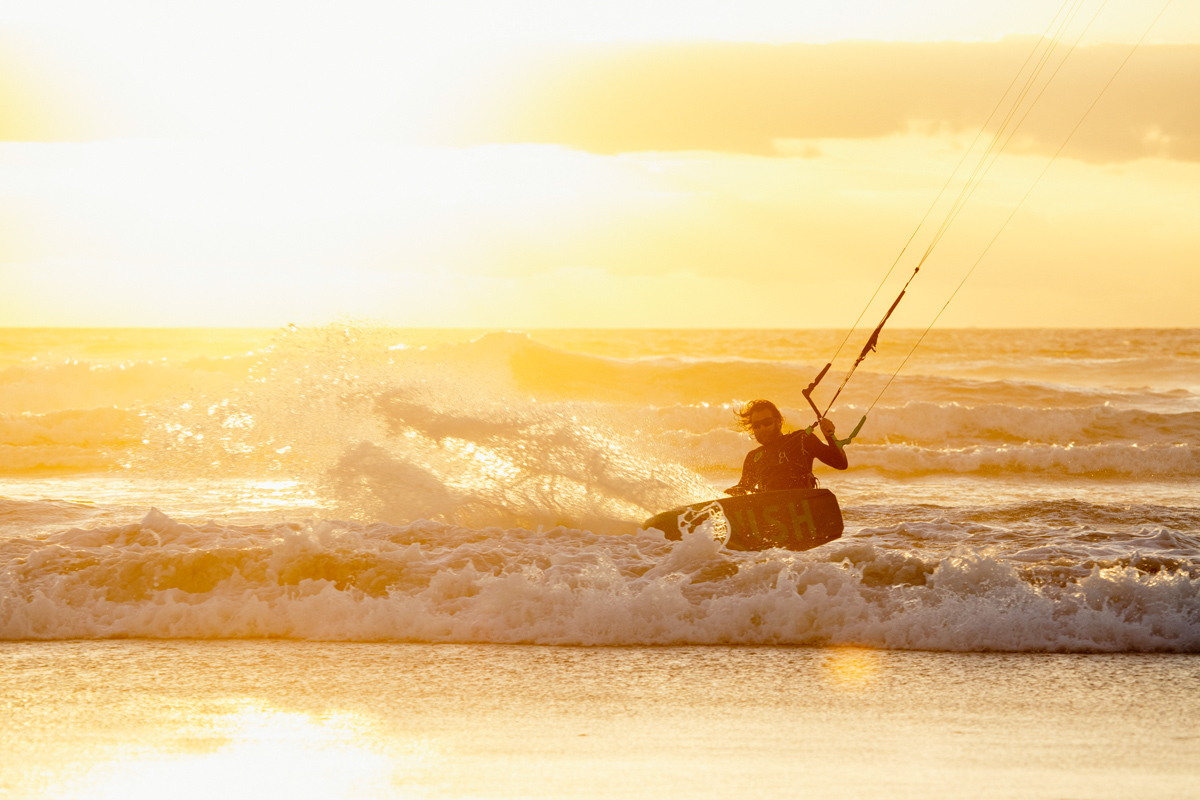For our new FLO watershades, we have added the option of non-polarized lenses.
We are aware that there are some riders out there that are looking for non-polarized lenses for watersports, especially for those foiling or riding waves.
We’ve been out on the water in a variety of weather and surf conditions, and it’s been an interesting exercise. Our research is clear. There are some conditions where polarization can be detrimental to performance. However, there is often a trade-off with comfort as without polarization, glare can lead to eye fatigue.
Sam Medysky sunset session in Cape Town
WHEN NON-POLARIZED LENSES WORK BETTER
The case for non-polarized lenses is persuasive where there is strong sun directly overhead. At this time of the day it can be difficult to read the surface. This is especially the case in light wind conditions where there is little surface disruption. This is because the water surface is perpendicular to the sunlight’s direction of travel. Here, the sunlight that passes through the water’s surface is polarized vertically. As polarized lenses are vertically polarized, this light is not filtered out by the polarizing filter. This explains the tendency to see through the water’s surface and focus on whatever lies beneath.
This is however qualified by the amount of texture on the surface caused by wind, boats and other craft. Where the flat surface is disrupted, this causes a change in the perpendicularity. This disruption reduces the amount of vertical light penetrating the surface and increases glare correspondingly.
As the sun arcs later in the day, the perpendicularity of the sunlight to the water surface naturally reduces. This has two effects. First, more light bounces off the surface, and this reflected light is horizontally polarized which polarizing lenses can filter out. Second, less vertically polarized light passes through the water’s surface meaning that the surface becomes decreasingly transparent.
IT’S ALL ABOUT THE ANGLE OF THE SUN
The smaller the angle of the sun to the surface – the greater the amount of horizontally polarized light (glare). A good example of this is at sunset, when sunlight is horizontally polarized as it reflects off the water’s surface. It is virtually impossible to see through the water’s surface at this time of day even if the surface is glassy flat.

Vertically polarized light barely penetrates the water in sunrise / sunset conditions
We found however that outside of the mid-day conditions, the advantages of polarization were clear. As the sun arcs through the afternoon (or indeed morning) trajectory, the reflected sunlight reflecting from the water caused discomfort and eye fatigue using non-polarized lenses. In addition, the lack of any glare reduction meant that it was often difficult to read the water’s surface when facing the sun.
IN CONCLUSION
We recognise that there are some occasions when non-polarized lenses will enhance performance on the water, so we will be rolling out non-polarized lens options for all our watershades. This journey starts with the FLO, which is designed with foiling and other light wind watersports in mind.
The FLO comes to market with 2 non-polarized lens options. In due course, there will be similar availability for both the Surge and the Typhoon.
Matt Black FLO / ZEISS Smoke ML Red lenses (non-polarized)






